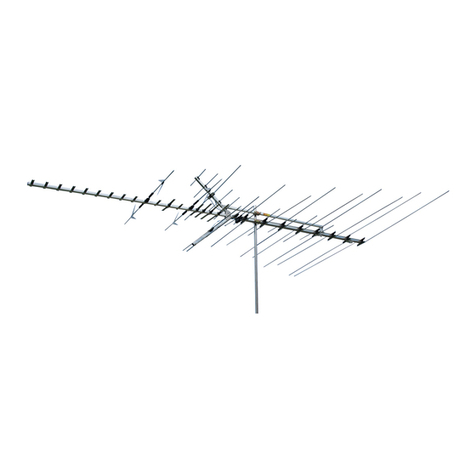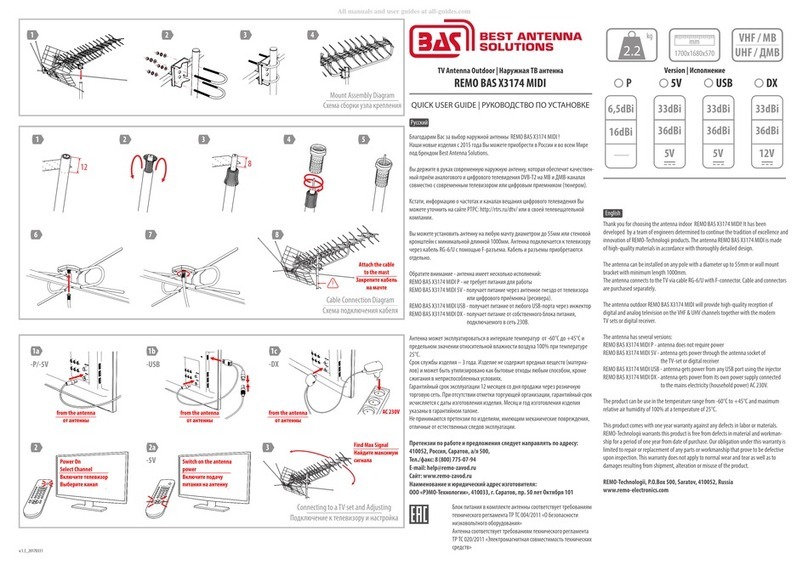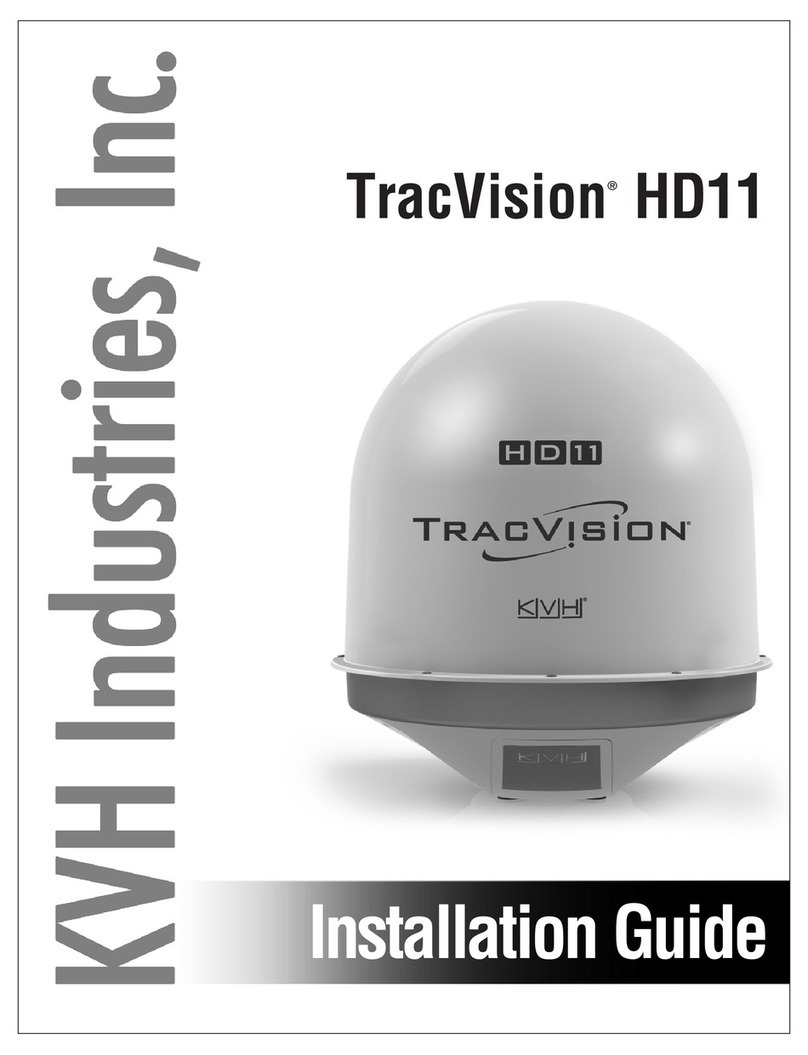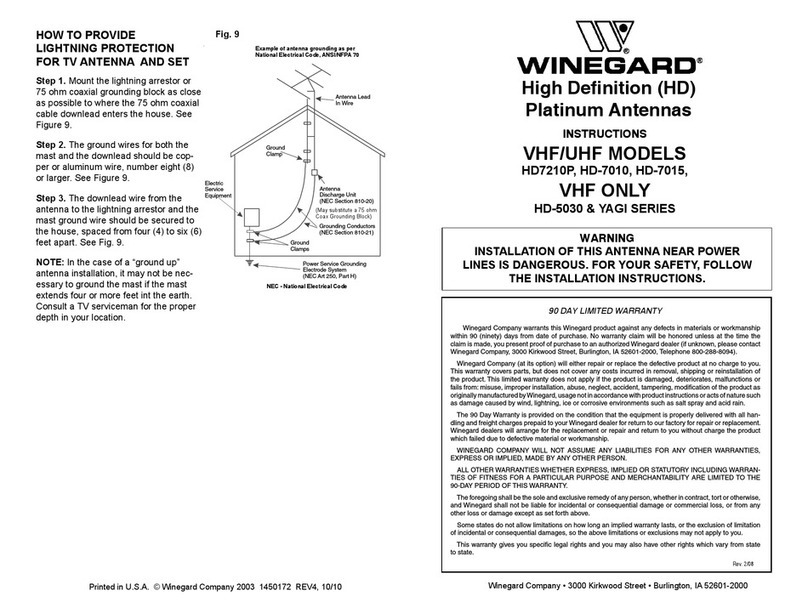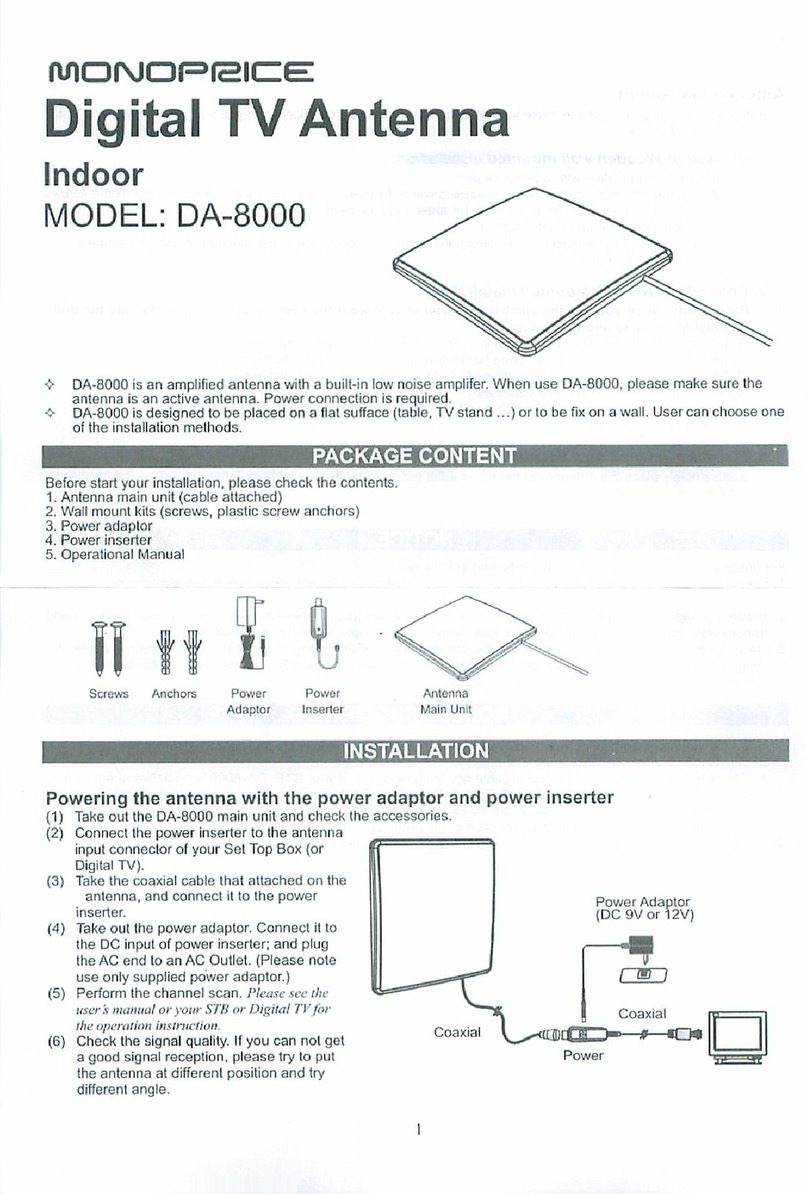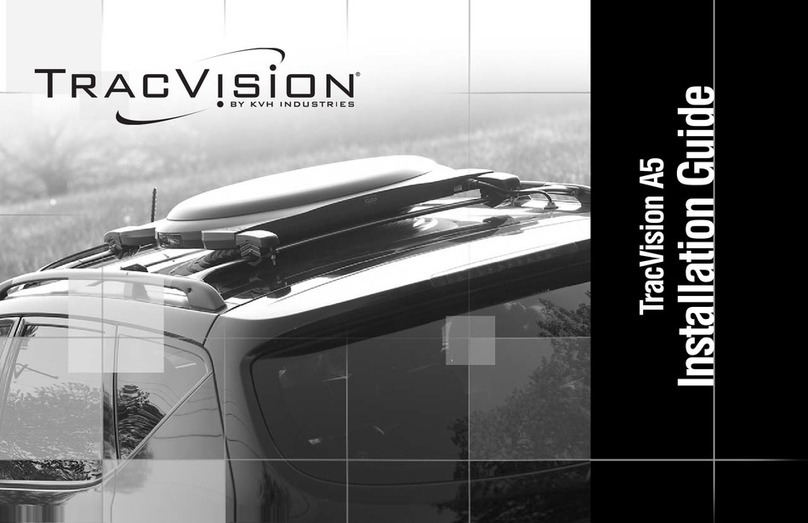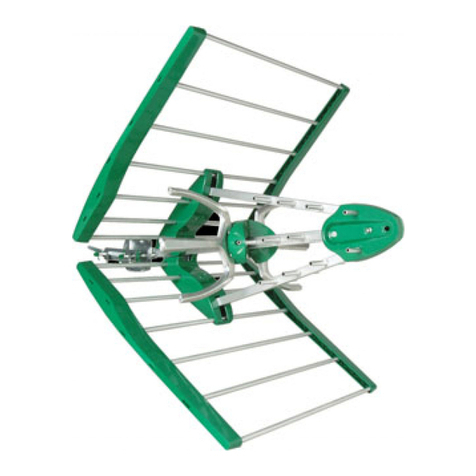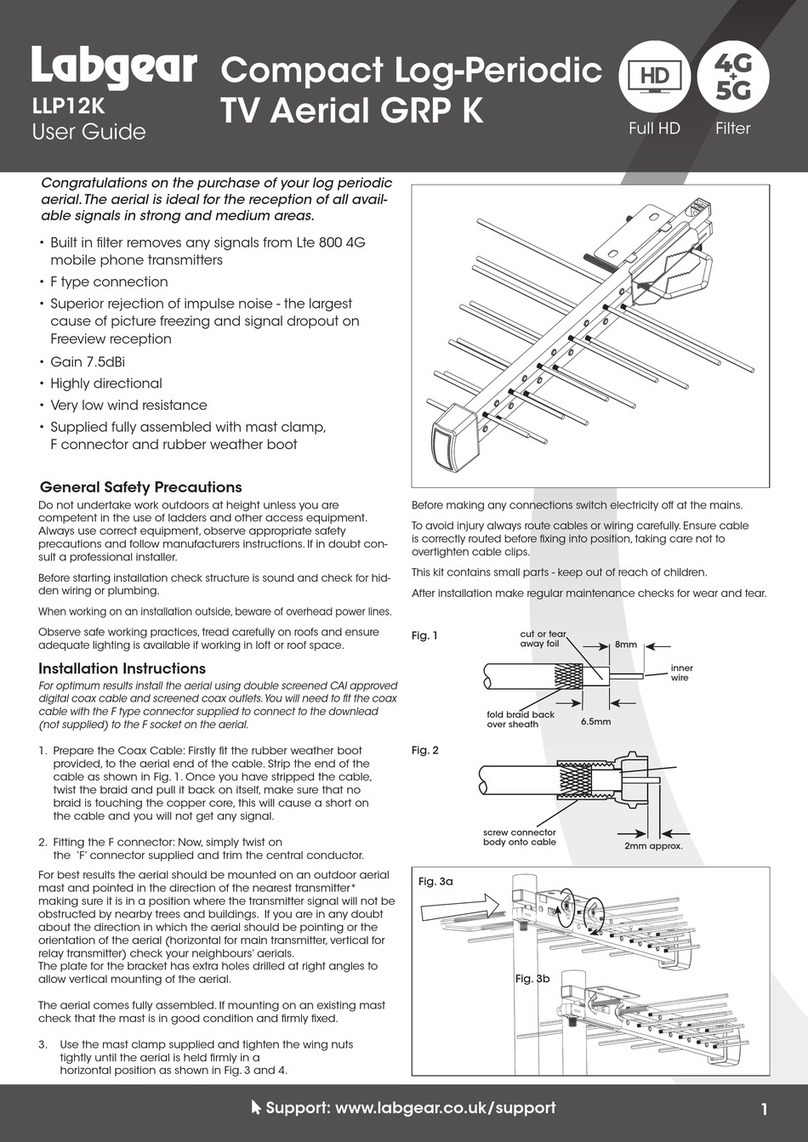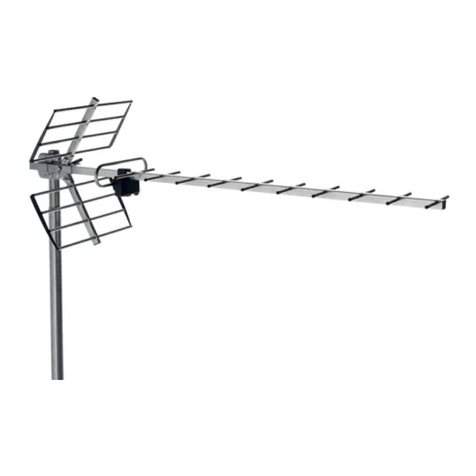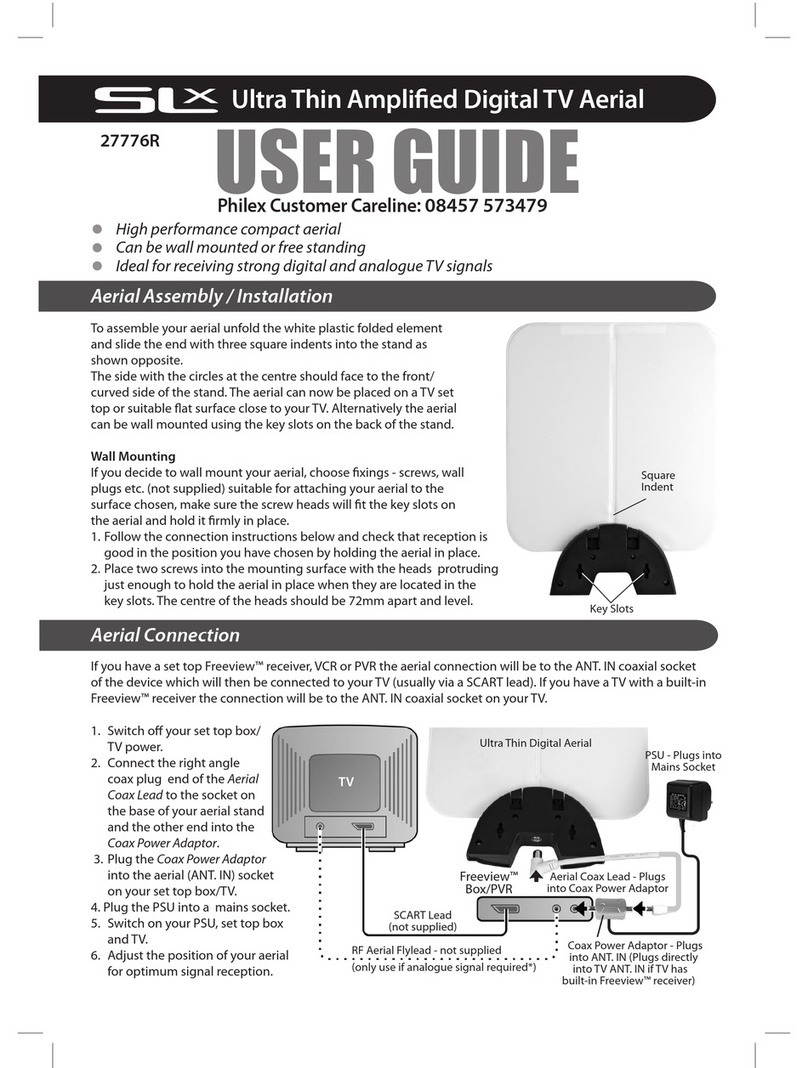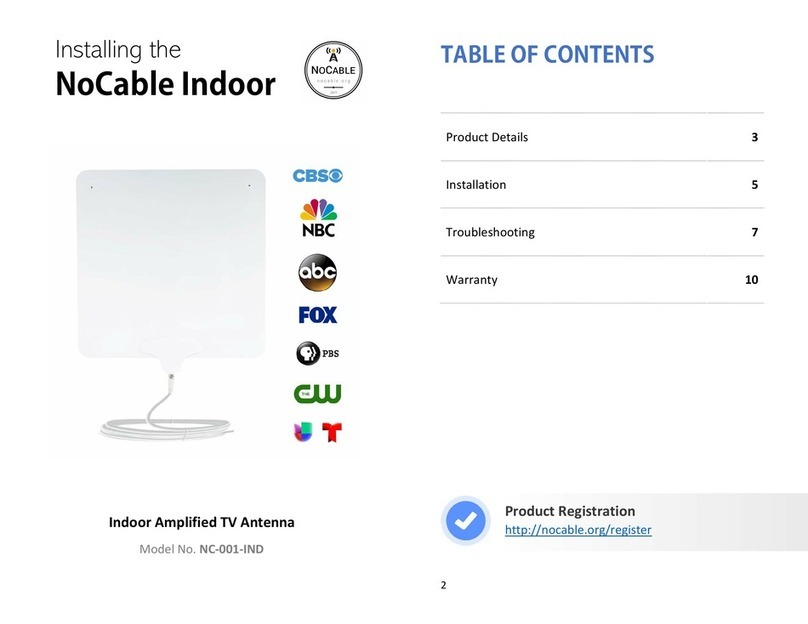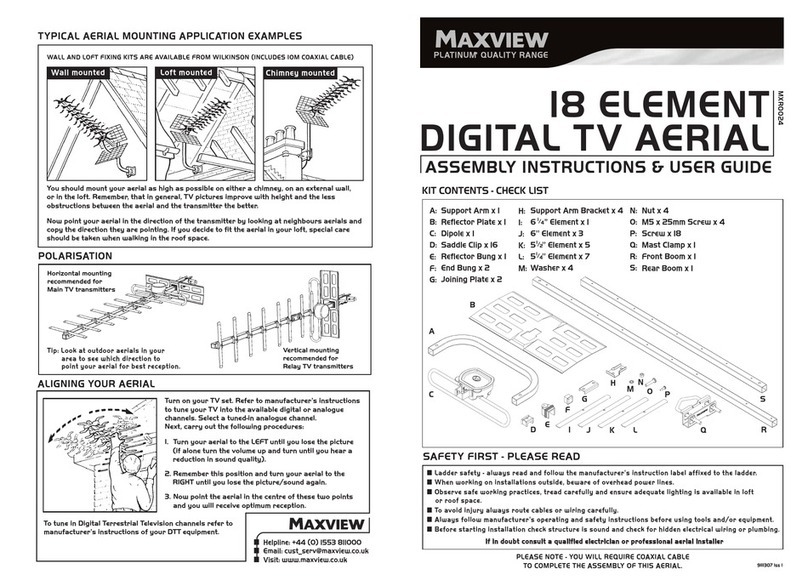Self-Sat Traveler Kit User manual

ENGLISH
User’s manual
TRAVELER KIT
Oceania-REV. 1.0
www.self-sat.com

ENGLISH
Contents
What is SELFSAT-Traveler Kit?
...............................................................................What is SELFSAT-Traveler Kit? 2
|
Safety Instructions
...........................................................................................Safety Instructions 2
|
Box Content
.................................................................................................Box Content 3
|
How to Install?
...............................................................................................
....................................................................................
..................................................................................
................................................................................
.....................................................
........................................................................
...............................................................
....................................................
...................................................................
....................................
........................................................................
How to Install?
Step 1 : Where to Install?
Step 2 : Check Information
Step 3 : Assembly Instruction
Step 4 : Connecting the Antenna and the Set top box
Step 5 : Fine Tuning and Fix the Bracket
|
|
|
|
|
|
A)
B)
C)
A)
B)
Assembling the Multi-Functional Base
Installing and xing the base of the camping set
Adjusting azimuth and elevation
How to prepare the cable?
How to connect the cable to the antenna and the set top box?
4
4
5
5
13
14
5
7
12
13
13
Troubleshooting Check List for Initial Installation
..........................................................Troubleshooting Check List for Initial Installation 15
|
Loss of Signal / Rain Fade
....................................................................................Loss of Signal / Rain Fade 15
|

2
Warning
Antennas improperly installed or installed to an inadequate structure are very susceptible to wind
damage. This damage can be very serious or even life threatening. The owner and installer assumes full
responsibility that the installation is structurally sound to support all loads (weight, wind & ice) and
properly sealed against leaks. The manufacturer will not accept liability for any damage caused by a
satellite system due to the many unknown variable applications.
Before using this product please read this manual carefully and follow exactly all installation, mounting &
orientation instructions.
All the instructions should be followed in order to avoid any technical problems.
Any electric or magnetic eld close to the SELFSAT-Traveler Kit may cause a bad reception or even cut o the
signal completely.
Do not drill the plastic cover of the antenna, which seals the antenna from moisture.
Handle the antenna with care as any impact will cause damage to the electronics.
Do not open the cover, any attempt to repair by a non-qualied person can be dangerous and void the warranty.
Any obstacle (buildings, trees, etc....) will block the reception of the signal from the satellite to the antenna.
Do not paint or add any substance on the antenna cover, this will block the reception of the signal from the
satellite.
The cable between the antenna and the Satellite receiver should not exceed 30m as it will decrease the quality of
the signal.
The use non- isolated jacks will result in a loss of the signal level.
Tighten all the screws of the antenna once you have nished the adjustments.
This product contains one universal LNB, it is forbidden to add, change or modify the LNB.
For more precise details on the above points or for any information, please ask your retailer or customer service.
•
•
•
•
•
•
•
•
•
•
•
•
•
Safety Instructions
What is SELFSAT-Traveler Kit ?
SELFSAT Traveler Kit is
the most focused on portability that is born after the combination of SELFSAT antenna,
which already has been proved the high eciency by using horn array wave guide technol-
ogy, and brand new portable bracket which is ecient and has various usage.
SELFSAT antenna is using Horn array wave guide technology that can receive major satellite
broadcast replacing dish shaped parabola antenna, can install easily and has high eciency
for its size.
Also the brand new portable bracket has innovative design which allow many type of install
position, such as stand type, window type etc. that is able to counteract diverse install
surroundings exibly.
This combination of SELFSAT & bracket will be new paradigm.

3
ENGLISH
Contents
No
1
2
3
4
5
6
7
8
9
10
11
12
A1
B1
B2
B4
B5
B6
C1
S1
S2
S3
S4
S5
1
1
1
1
1
1
1
1
1
2
4
1
Antenna Body
(Antenna, Angle Bracket)
Multi-Functional Base
Suction cup
Fix Plate
Manual
Carrying case
Compass
L type bolt
U type bolt
M6x65 Hex
M6 Knob Nuts
M8 Knob Nuts
Symbol Part name Image Quantity

4
Note
please take reference to the table of the Azimuth angles specied in the back pages of this manual.
Note
< Compass > < Azimuth Angle >
To ensure an accurate compass reading, stay away from large metal objects, specically electrical cables
and then make multiple readings.
Bad Quality Signal Reception
BAD!BAD!
Good Quality Signal Reception
GOOD!GOOD!
Azimuth
Angle
S 180o
N 0o
Satellite position
How to Install?
By following the instructions step by step, you can proceed easily to install SELFSAT-
Traveler Kit by yourself or with the help of a professional antenna installer.
Step 1: Where to Install?
In order to receive a signal from the Satellite, SELFSAT-Traveler Kit is to be installed in an open loop space
(outside the house or the apartment), in the direction of the satellite towards the equator, for which, you will
need a compass to exactly orient SELFSAT-Traveler Kit toward the satellite.
Make sure that there are no obstacles in front of SELFSAT-Traveler Kit which can decrease the signal reception
quality, such as buildings or trees (you may keep in mind that trees will grow and may block the signal).
In order to be able to x and install your antenna easily, you might choose an easily accessible place without any
potential danger for installation.
Think about the way you might pass your cable in a discreet way from the SELFSAT-Traveler Kit to your Set top Box.
The antenna should not be too distant from your satellite receiver; a cable longer than 30 meters may decrease the
quality of the signal.
Before installing your antenna, you check that SELFSAT-Traveler Kit box contains all the items listed above in
the ‘Box Content’. In the event of any missing parts, please contact your distributor.

5
ENGLISH
Step 3 : Assembly Instruction
A) Assembling the Multi-Functional Base
Open the Multi-Functional Base
- Open the two wings of the Multi-Functional
1)
B1 B1
-
Pull out the Base Support, then put it on the plane
B1
B1
Step 2: Check Information
In order to install antenna, you need to nd skew, elevation and azimuth angle by referring the table on the
back of the manual. If you can’t nd your location, please refer to the information of the nearest place from
your location. This manual will show you the installation example to receive Optus D3 satellite in Sydney
region of Australia. The angle information for Sydney region is Skew : -37.9°, El : 50.°, Az : 8.6°

6
S4
S3
Fold the Multi-Functional Base
-
Use the two M6x65mm Hex. Head Screws and two M6 Knob Nuts to fasten the Multi-Functional Base
2)
B1

7
ENGLISH
B) Installing and xing the base of the camping set
Type 1
Take the folded Multi-Functional Base on the table
Put he long side of L-Type Bolt into the Fix Plate and the short side into the Multi-Functional
Base
1)
2)
B1
B3
Use the M8 Knob Nut to fasten the Fix Plate and the Multi-Functional Base
Insert the Antenna Set onto the Multi-Functional Base and M6x25mm Knob Screw to fasten the
Camping-Set on the table
3)
4)
S1
S1
S1
M6 x 25mm
Knob nut
B1
B3

8
Type 2
Put the folded Multi-Function Base along a mast and insert the U-Type Bolt into the Multi-Functional
Base. Then use two M6 Knob Nuts to fasten the Multi-Functional Base on the mast
Insert the Antenna Set onto the Multi-Functional Base and use M6x25mm Knob Screw to fasten the
Camping-Set
1)
2)
B1
Type 3
Take the open Multi-Functional Base and slightly loosen the M6x*25mm Knob Screw
Insert the Antenna Set onto the opened Multi-Functional Base. Then tighten the M6x25mm Knob
Screw
1)
2)
S3
S4
S2
B1
B1
A1
M6 x 25mm
Knob Screw
M6 x 25mm
Knob Screw

9
ENGLISH
S4
S4
S4
Type 4
Upright the handle of the suction cup, then push it on the plane
Press the handle of the suction cup backwards to x the suction cup base
1)
2)
Lightly loosen the M6 Knob Nut, then slide the folded Multi-Functional Base into the suction cup
set to the end (see red arrow below)
3)
B2
B2
B2
B2
B1
B1
B1
Push
Make a sound of „Click“
B2

10
Insert the Antenna Set onto the Multi-Functional Base and use M6x25mm Knob Screw to fasten
the Camping-Set
4)
Type 5
Upright the handle of the suction cup, then push it on the plane
Press the handle of the suction cup backwards to x the suction cup base
1)
2)
B2
Push
Make a sound of
„Click“
B2
M6 x 25mm
Knob Screw

11
ENGLISH
S4
B3
B1
Slightly loosen the M6 Knob Nut
Slide the folded Multi-Functional Base into the suction cup set to the end (see red arrow below)
3)
4)
Tighten the M6 Knob Nut to fasten the Multi-Functional Base on the suction cup
Insert the Antenna Set onto the Multi-Functional Base and tighten the M6x25mm Knob Screw
5)
6)
M6 x 25mm
Knob Screw

12
C) Adjusting angle (skew, elevation, azimuth)
Refer to the Angle Table, set the exact angle, then tighten up with M6x18mm bolt.
Skew angle is an important factor to get optimized signal.
Adjusting the skew
Adjusting the elevation
Refer to the Angle Table, set the local elevation angle.

13
ENGLISH
Check the broadcast is showing while adjusting antenna.
Find the optimized elevation & azimuth angle, then tighten up with bolt.
Adjusting the azimuth
A) How to prepare the cable?
It is important that the coaxial cable does not become damaged or kinked
during the installation procedure.
B) How to connect the cable to the antenna and
the set top box?
One side
To Antenna
Other side
To receiver
Cable
15mm CONNECTOR COVER
F CONNECTOR
8mm
3mm
Step 4 : Connecting the Antenna and the Set top box
Once you have installed the antenna in an open loop space and mounted the way you want it to be the next
step is to connect it all together.
In order to be able to watch your favorite satellite programs, you need to connect your satellite antenna to a
receiver by a cable. The cable between the antenna and the Satellite receiver should not exceed 30m as it will
decrease the quality of the signal. The use of a long or bad quality cable and not isolated jacks can cause a loss
of the signal level, it would be preferable to use an RG6 Coaxial cable (HF 17VATC or 19VATC cable), in order
to minimize a signal loss.

14
Antenna Pointing Menu
Signal: 0
Satellite : OPTUS D3
Polarization : Horizontal
Frequency : 11720
Step 5 : Fine Tuning and Fix the Bracket
Once ne tuning is completed for signal reception, please tighten bolt and nut.
Once all connected, turn on the TV and the Satellite receiver.
Select the Antenna Pointing Menu on your set top box.
You can check signal level on your TV.
You will need someone to stay in front of the TV to tell you when the signal is “good” while you’re outside
trying to adjust the antenna the best way possible.
The signal level and quality is indicated on the TV screen and will uctuate and change color according to the
adjustment & movement of the antenna while you are pointing & nding (azimuth, elevation angle).
The level indicates the power of the signal and the color is the signal reception quality from the chosen
satellite.

15
ENGLISH
Make sure all cable connections are correct and each connection is seated / tightened properly
Inspect the inside of each cable connector for dirt or possible connector to case/shield short.
Verify the Azimuth, Elevation and Tilt angles for your location by ZIP code.
Make sure the Tilt and Elevation pointers are aligned correctly to the scales. Do not use washer or bolt as
reference.
Make sure the Tilt adjustment is not changed from the recommended setting for the antenna location.
Remove existing TV-specic components such as TV splitter; etc reduce the installation to the basic connections
called out in this guide. Such components may not work with the satellite signal and they may be in the wall
where you can’t see them. When in doubt. Run RG6 cable directly to your receiver.
Make sure there are no obstructions (trees, buildings, windows, corner or overhang of your roof, your body or
hands) – the signal does not pass leaves, branches, glass, etc.
RG 6 cable with solid copper center conductor is highly recommended because it has much lower DC voltage
drop compared to RG 6 cable with a copper-coated, steel center conductor.
Standard RG 59 cable causes too much DC drop and signal drop; it cannot be used to pass the satellite signal.
RG 6 coaxial cable must be used.
Some after-market, o-the-shelf add-on components may not be as advertised. They might not work or could
cause additional DC drops and signal amplitude attenuation. Remove such components. Go back to the basic
connections called out in this manual and re-verify.
Make sure the satellite cable is connected to the “Sat In” jack, not the “Antenna In” jack, The “Antenna In” jack
at the back of the receiver is for o-air antenna input or cable TV input.
If all are done correctly but the signal is still not found. Change the Elevation adjustment of the antenna slightly
(±2°, then ±4°from the called-for setting) and repeat the procedure.
Make sure the Access Card from your receiver is fully inserted into the Access Card slot and oriented correctly.
•
•
•
•
•
•
•
•
•
•
•
•
•
Troubleshooting Check List for Initial Installation
The satellite signal may be lost temporarily due to unusually heavy rainfall. An optimally aligned antenna, along
with the shortest possible cable run, minimizes the chances of “rain fade.”
Make sure the antenna is mounted securely to prevent it from being blown out of alignment in a heavy wind.
Heavy snow accumulation on the antenna may reduce the satellite signal strength, snow should be swept
away as soon as possible.
Tree foliage growth into antenna’s line-of-sight to the satellite may result in gradual loss of picture.
•
•
•
•
Loss of Signal / Rain Fade
If the signal is not found, be sure the receiver user manual and the antenna user
manual have been followed closely, check the following:

Appendix
160.0 °E
34.4
43.5
-17.4
50.7
49.7
0.1
52.4
46.2
0.7
14.8
57.0
-31.9
68.3
42.4
17.1
41.1
64.3
-6.1
18.4
47.4
-30.1
63.8
59.5
16.3
75.2
42.8
25.7
24.4
42.9
-26.1
13.9
56.5
-32.7
18.3
38.9
-31.7
35.3
57.3
-13.0
23.7
43.4
-26.5
48.5
60.0
0.5
14.9
50.7
-32.6
61.4
30.0
3.2
68.5
37.8
15.8
22.8
60.6
-24.1
15.5
49.5
-32.2
35.4
62.9
-11.9
56.2
64.3
9.2
15.8
48.8
-32.0
156.0 °E
28.7
45.4
-21.8
45.3
52.8
-4.4
47.5
49.4
-3.2
6.4
57.8
-39.3
65.3
46.3
14.8
31.8
66.9
-14.7
11.8
48.4
-35.4
58.8
63.5
11.7
73.0
47.1
24.0
18.4
44.1
-30.6
5.6
57.2
-40.1
12.6
39.7
-35.8
27.6
59.5
-19.8
17.7
44.7
-31.1
41.3
63.1
-6.1
7.7
51.4
-38.5
57.9
33.2
1.0
65.6
41.7
13.7
13.6
61.9
-32.5
8.6
50.3
-37.9
26.1
65.1
-20.5
49.0
67.9
2.4
9.0
49.6
-37.6
42.2
40.1
33.4
57.4
44.7
50.5
58.6
41.2
50.5
26.5
54.8
23.4
72.2
36.4
64.9
51.7
59.5
48.7
27.7
45.3
22.3
69.3
53.4
66.1
77.9
36.5
72.7
32.7
40.4
25.2
25.5
54.5
22.4
26.4
37.0
19.0
45.1
53.3
40.5
32.1
41.0
24.8
56.8
54.8
52.9
25.0
48.7
20.8
66.2
25.1
50.9
72.3
32.0
63.3
34.9
57.5
31.7
25.4
47.5
20.8
46.5
58.6
43.2
64.0
58.4
61.3
25.5
46.8
20.8
166.0 °E
Australia
Note
For more areas not listed in the table above, you can visit www.self-sat.com and refer to the “CUSTOMER SUPPORT/Satellite Angle
Table” page.
Az = Azimuth El = Elevation Sk = Skew
Adelaide
S -34.92, E 138.60
Alice Springs
S -23.70, E 133.88
Ayers Rock
S -25.30, E 130.99
Brisbane
S -27.47, E 153.03
Broome
S -17.95, E 122.24
Cairns
S -16.92, E 145.77
Canberra
S -35.28, E 149.13
Cove & Nhulunbuy
S -12.19, E 136.77
Darwin
S -12.46, E 120.84
Geelong
S -38.15, E 144.36
Gold Coast
S -27.99, E 153.37
Hobart
S -42.88, E 147.33
Longeach
S -23.44, E 144.25
Melbourne
S -37.81, E 144.96
Normanton
S -17.67, E 141.08
Newcastle
S -32.93, E 151.78
Perth
S -31.95, E 115.86
Port Hedland
S -20.31, E 118.58
Rockhampton
S -23.38, E 150.51
Sydney
S -33.87, E 151.21
Townsville
S -19.26, E 146.82
Weipa
S -12.64, E 141.87
Wollongong
S -34.43, E 150.90
Az
El
Sk
Az
El
Sk
Az
El
Sk
Az
El
Sk
Az
El
Sk
Az
El
Sk
Az
El
Sk
Az
El
Sk
Az
El
Sk
Az
El
Sk
Az
El
Sk
Az
El
Sk
Az
El
Sk
Az
El
Sk
Az
El
Sk
Az
El
Sk
Az
El
Sk
Az
El
Sk
Az
El
Sk
Az
El
Sk
Az
El
Sk
Az
El
Sk
Az
El
Sk
NSS 6 Optus B3 Optus C1 Optus D1 Intelsat 19
57.0
30.5
43.5
68.9
32.0
58.7
69.6
28.8
57.9
47.8
46.3
41.1
79.0
22.5
69.0
66.8
46.3
61.6
46.0
37.6
36.0
77.3
38.6
72.5
82.7
22.0
75.6
49.3
32.4
36.6
46.9
46.1
40.1
43.3
30.6
30.2
61.1
41.6
53.4
48.8
33.0
36.5
69.4
41.3
63.1
44.6
41.2
36.1
75.6
13.3
55.3
79.3
18.4
67.2
54.9
47.1
48.7
44.6
40.0
35.7
63.2
46.2
57.4
74.4
43.9
70.0
44.6
39.4
35.4
180.0 °E
Intelsat 18
152.0 °E
22.6
47.0
-26.6
39.2
55.6
-9.7
42.0
52.3
-7.8
357.8
57.9
-47.0
61.7
50.1
11.9
20.6
68.9
-25.4
5.0
48.9
-41.0
52.2
67.2
5.6
70.4
51.2
21.9
12.3
45.1
-35.4
357.1
57.3
-47.6
6.9
40.3
-40.0
18.9
61.2
-27.7
11.4
45.6
-36.0
32.4
65.8
-14.3
0.4
51.7
-44.7
54.1
36.3
-1.6
62.3
45.4
11.1
3.8
62.6
-41.6
1.4
50.6
-43.8
15.4
66.6
-30.5
39.2
71.0
-6.9
2.0
50.0
-43.4
301.0
28.8
-44.7
296.5
38.7
-55.0
300.5
40.4
-51.2
286.1
19.8
-58.5
300.9
52.5
-54.7
283.4
29.7
-68.6
292.7
20.4
-48.9
283.3
40.2
-72.0
294.0
56.7
-63.1
297.9
22.8
-44.0
286.1
19.4
-58.0
297.7
18.4
-40.4
288.9
29.2
-60.2
297.3
22.5
-44.6
286.3
34.2
-66.1
289.6
19.2
-52.3
324.2
46.5
-29.7
308.5
54.2
-47.2
285.3
23.3
-62.3
290.5
19.3
-51.1
284.5
28.0
-66.0
281.6
34.7
-72.9
291.0
19.3
-50.4
95.0 °E

Appendix
New Zealand
Note
For more areas not listed in the table above, you can visit www.self-sat.com and refer to the “CUSTOMER SUPPORT/Satellite Angle Table” page.
Az = Azimuth El = Elevation Sk = Skew
Auckland
S -36.85, E 174.76
Christchurch
S -43.53, E 172.64
Dunedin
S -45.87, E170.50
Gisborne
S -38.67, E 178.02
Hamilton
S -37.79, E 175.28
Invercargill
S -46.41, E 168.36
Napier/Hastings
S -39.64, E 176.84
New Plymouth
S -39.06, E 174.08
Palmeraton North
S -40.35, E 175.61
Waitemata
S -36.84, E 174.75
Wanganui
S -39.93, E 175.04
Wellington
S -41.29, E 174.78
Whangarei
S -35.72, E 174.32
Az
El
Sk
Az
El
Sk
Az
El
Sk
Az
El
Sk
Az
El
Sk
Az
El
Sk
Az
El
Sk
Az
El
Sk
Az
El
Sk
Az
El
Sk
Az
El
Sk
Az
El
Sk
Az
El
Sk
Optus D1
336.3
44.5
26.2
342.0
38.2
32.0
345.5
36.2
35.0
332.5
41.4
23.9
336.0
43.4
26.2
348.5
36.0
37.1
334.6
40.9
25.7
338.3
42.5
28.3
336.7
40.6
27.4
336.3
44.5
26.2
337.3
41.3
27.8
338.2
39.9
28.8
336.4
45.8
26.0
160.0 °E

TRAVELER KIT
Table of contents
